ISO 22000 certification in Cape Town
Get Free Consultation
ISO 22000 Certification in Cape Town helps food businesses establish a robust food safety management system to ensure the safety and quality of products throughout the supply chain. As a globally recognized standard, ISO 22000 enables organizations in Cape Town to identify and control food safety hazards, meet regulatory requirements, and maintain consistent compliance with international best practices. By achieving ISO 22000 certification, companies can enhance consumer trust, improve operational efficiency, reduce food safety risks, and gain a stronger position in both local and international markets.
What is ISO 22000?
ISO 22000 is an international standard for food safety management systems (FSMS). It helps organizations involved in the food chain ensure that food is safe to eat at every stage—from farm to fork.
In simple terms, ISO 22000 combines food safety principles like HACCP (Hazard Analysis and Critical Control Points) with a strong management system. It focuses on identifying food hazards, preventing contamination, and improving communication across the supply chain.
This certification is ideal for food producers, processors, transporters, retailers, and even packaging companies, helping them build trust with consumers and meet international food safety regulations.
Why ISO 22000 is Important in Cape Town
Cape Town’s food industry is diverse, ranging from agriculture and food processing to restaurants and catering. With its global reputation as a food and wine destination, maintaining high food safety standards is non-negotiable. ISO 22000 certification is a mark of quality that assures customers, partners, and regulators that your business prioritizes food safety.
Whether you supply locally or export to international markets, ISO 22000 certification ensures compliance with legal requirements and industry best practices. It also helps you stay ahead of competitors, enhance operational efficiency, and reduce risks associated with foodborne illnesses or contamination.
How to Get ISO 22000 Certification In Cape Town?

Process to Get ISO 22000 Certification In Cape Town
Consultation and Gap Analysis
We start by understanding your business and assessing your current food safety practices. A gap analysis identifies areas for improvement to align your processes with ISO 22000 requirements.
Planning, Documentation, and Policy Development
Based on the assessment, we help you create customized food safety policies, procedures, and documentation. These policies form the backbone of your Food Safety Management System.
Training and Awareness
Your employees play a crucial role in food safety. We provide training to ensure they understand their responsibilities and follow the FSMS effectively.
Internal Audit and Management Review
Once the FSMS is implemented, we conduct an internal audit to assess its effectiveness. A management review ensures the system aligns with your business goals and complies with legal requirements.
External Certification Audit and Certification
We work with an accredited certification body to conduct the external audit. Once certified, we provide ongoing support to help you maintain compliance and continuously improve your food safety practices.
Benefits Of ISO 22000 Certification In Cape Town
- Enhanced Food Safety: ISO 22000 ensures a systematic approach to identifying and controlling food safety risks. This minimizes the chances of contamination, ensuring the safety and quality of your food products.
- Compliance with Food Regulations: With ISO 22000, your business meets both South African and international food safety laws, avoiding potential penalties and legal issues.
- Increased Customer Trust: Customers are more likely to trust and choose products from a certified business. ISO 22000 certification shows your commitment to their health and safety, building loyalty and confidence in your brand.
- Improved Business Reputation: ISO 22000 certification strengthens your reputation in the market, showcasing your dedication to global food safety standards. This opens doors to new partnerships and business opportunities.
- Cost Savings: By preventing food safety incidents, you save on costs related to recalls, legal actions, and waste. A robust FSMS also reduces inefficiencies in production.
Types Of ISO Certification In Cape Town
Get Free Consultation
Our Clients



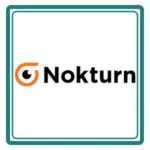


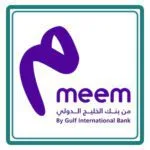
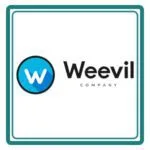



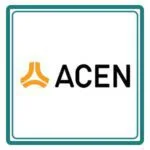
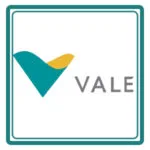





Which Industries Need ISO 22000 certification in Cape Town?
- Food & Beverage Manufacturing: For producing safe, high-quality packaged foods, beverages, and dairy products.
- Agriculture & Farming: To ensure safe harvesting, storage, and handling of fruits, vegetables, grains, and livestock.
- Food Processing Plants: To control contamination risks and maintain hygiene during processing and packaging.
- Restaurants, Hotels & Catering (HORECA): To assure tourists and locals that food served is prepared and handled safely.
- Retail & Supermarkets: To ensure the safety of packaged and fresh food from suppliers to shelves.
- Seafood & Fishing Industry: To ensure that fish and marine products are handled and stored under hygienic conditions.
Cost Of ISO 22000 Certification In Cape Town
The cost of ISO 22000 certification depends on factors like the size of your business, the complexity of operations, and your current food safety practices. At PopularCert, we offer tailored, affordable solutions to help you achieve certification without unnecessary expenses.
Why Choose PopularCert For ISO 22000 Certification In Cape Town?
ISO 22000 certification is your ticket to ensuring food safety, improving customer trust, and expanding your business in both local and international markets. At PopularCert, we simplify the certification process, making it hassle-free and cost-effective.
Contact us at to start your journey toward ISO 22000 certification in Cape Town. Let’s work together to elevate your food safety standards and grow your business!
GET A FREE CONSULTATION NOW
FAQ
What is ISO 22000 certification?
ISO 22000 is an international standard for Food Safety Management Systems (FSMS). It ensures organizations in the food industry implement processes to control food safety hazards and deliver safe products.
Why is ISO 22000 important for businesses in Cape Town?
ISO 22000 certification helps businesses in Cape Town’s food industry ensure product safety, meet legal and regulatory requirements, enhance customer trust, and gain a competitive edge.
How can I get ISO 22000 certification in Cape Town?
To achieve ISO 22000 certification:
- Understand the requirements of the standard.
- Implement a Food Safety Management System (FSMS) based on ISO 22000.
- Conduct internal audits and management reviews.
- Apply for certification with an accredited certification body.
What is process of ISO certification in Cape town?
The process includes Gap analysis, Awareness Training, Document support, Internal Audit, MRM and Final audit.
Which are the Popular Standards developed by ISO?
- ISO 9001- Best-known quality management standard.
- ISO 45001-Occupational health and safety management.
- ISO 14001-Environmental management standard.
- ISO 22000-Food Safety management standard.
- ISO 27001-Information Security Management standard.
- ISO 20000- Food Security Management Systems
- ISO 27001-Information Management Security System ISMS for managing information security
- ISO 13485- Medical Equipment Quality control
- ISO 17025-Medical labs tests and calibration
